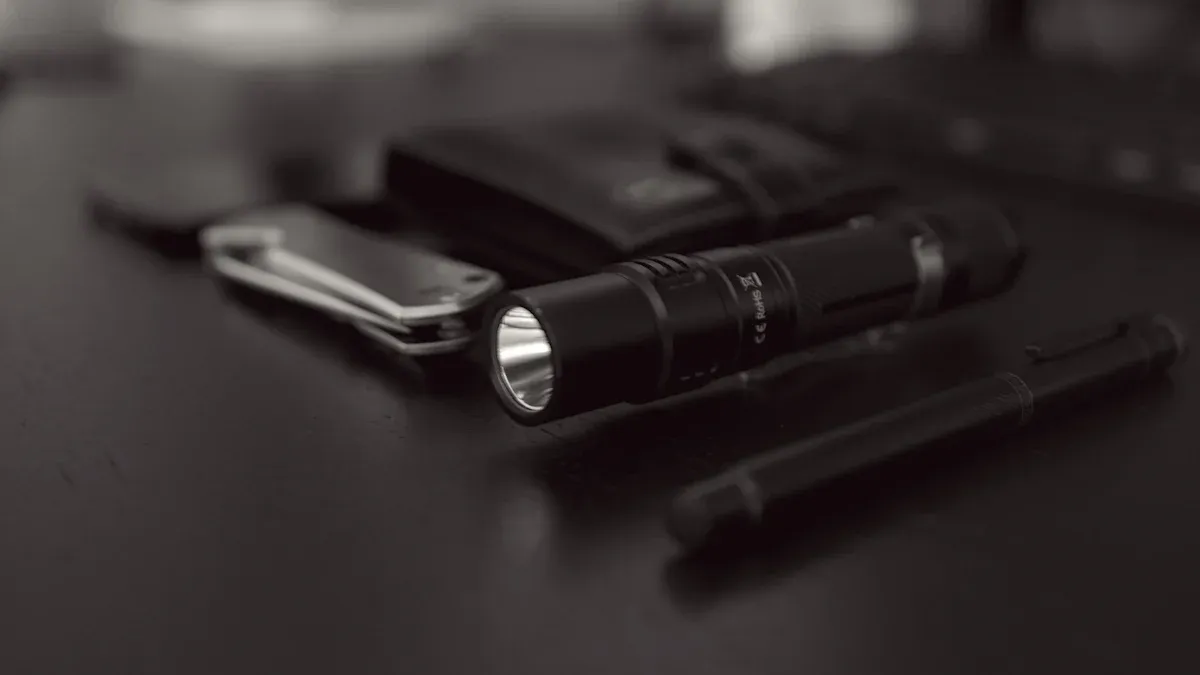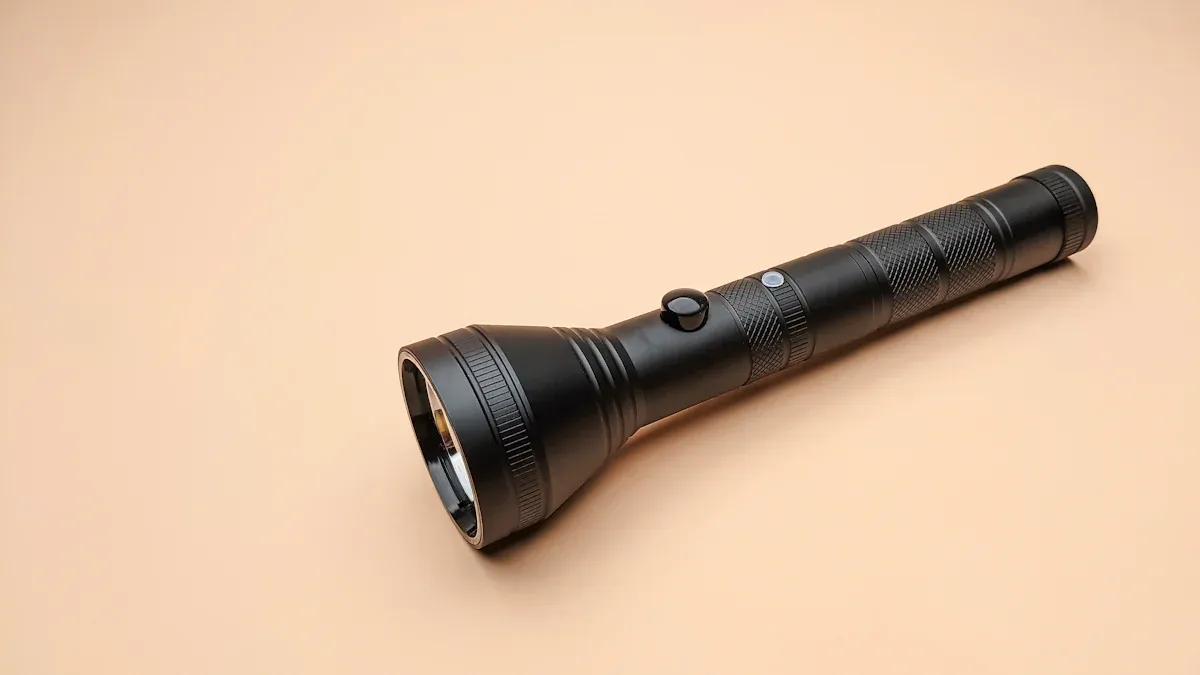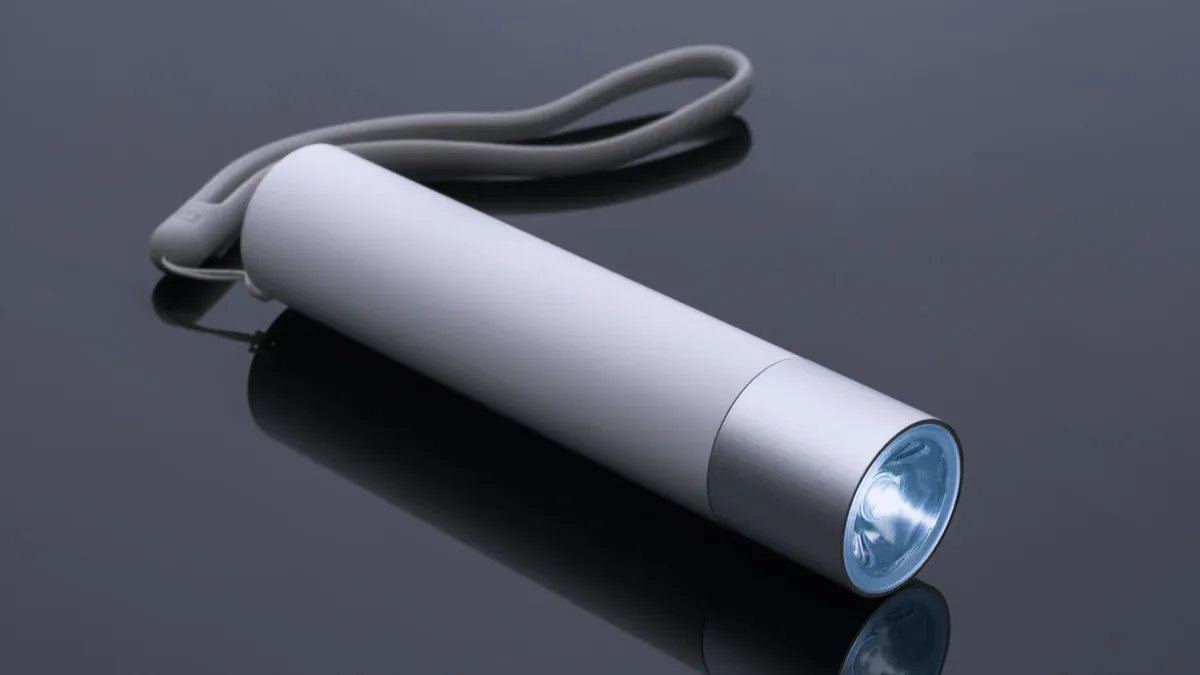How Size and Weight Impact Your Flashlight Choice for Daily Use

Choosing the right flashlight for daily use depends heavily on its size and weight. A compact and lightweight design ensures easy portability, while a well-balanced flashlight enhances comfort during extended use. You should also consider how the light output meets your needs. A helius flashlight, for example, offers excellent functionality without compromising on convenience.
Key Takeaways
Pick a small and light flashlight to carry easily. This helps you take it anywhere without trouble.
Find flashlights shaped to fit nicely in your hand. This makes it comfy to use for a long time.
Think about rechargeable flashlights to save money and help the planet. They last longer and cut down on battery trash.
Why Size and Weight Matter in Flashlights

Portability and Storage Considerations
The size and weight of a flashlight play a significant role in its portability. A compact flashlight easily fits into your pocket, bag, or glove compartment, making it accessible whenever you need it. Lightweight designs reduce the burden of carrying extra gear, especially during long commutes or outdoor activities. You should also consider storage. Smaller flashlights take up minimal space, which is ideal for those who prefer to keep their tools organized. For example, compact keychain flashlights are perfect for everyday carry, ensuring you always have a reliable light source on hand.
Comfort and Usability in Daily Scenarios
A well-balanced flashlight enhances comfort during use. Heavier models can cause hand fatigue, especially during extended tasks like repairs or inspections. Compact and lightweight flashlights are easier to handle, making them suitable for quick, daily tasks. You should also think about usability. Flashlights with ergonomic designs fit comfortably in your hand, allowing you to focus on the task without distraction. Whether you’re walking your dog at night or searching for items in a dark corner, a lightweight flashlight ensures convenience and ease of use.
Examples of Flashlight Sizes and Their Ideal Use Cases
Different flashlight sizes cater to specific needs. For camping or outdoor adventures, headlamps and lanterns provide hands-free lighting and illuminate larger areas. High-lumen flashlights or rechargeable lanterns are excellent for emergency preparedness, offering reliable light during power outages. For daily use, small keychain or compact handheld flashlights are ideal due to their portability and accessibility. Tactical flashlights, with features like strobe modes, are effective for self-defense, offering both illumination and protection.
Balancing Size, Weight, and Performance in Flashlights
Finding the Right Balance for Urban vs. Outdoor Use
Your flashlight needs can vary depending on whether you’re navigating urban environments or exploring the outdoors. For urban use, compact and lightweight flashlights are ideal. They fit easily into your pocket or bag and provide sufficient lumen output for tasks like finding keys or walking at night. A tactical flashlight with multiple modes, such as strobe or SOS, can also enhance safety in city settings.
Outdoor activities demand more robust performance. A helius flashlight with exceptional brightness and a zoomable feature ensures you can adjust the beam for wide-area illumination or focused tasks. Models with a high waterproof rating, such as IP45, are essential for unpredictable weather. Lightweight designs with durable materials like titanium offer the strongest portable beam without adding unnecessary bulk to your gear.
Evaluating Features Like Brightness and Battery Life
Brightness and battery life are critical factors when you choose flashlights. For daily use, a lumen output of 300-700 is sufficient. However, outdoor enthusiasts may require higher lumen output for better visibility. A helius flashlight, with its powerful illumination and efficient power management, provides long-lasting performance. Its rechargeable 26650 battery ensures cost-effectiveness and sustainability, making it a practical choice for extended trips.
You should also consider the flashlight’s runtime. Rechargeable options often outperform traditional batteries in terms of longevity. This feature is especially useful for tactical flashlights, which may need to operate continuously during emergencies. Always evaluate how the flashlight balances brightness with battery life to meet your specific needs.
Tips for Choosing the Best Helius Flashlight for Your Needs
When selecting the best flashlight, focus on balancing size, weight, and performance. Here are some practical tips to guide your decision:
Opt for a compact design that fits easily into your travel gear.
Prioritize lightweight options for outdoor activities to reduce fatigue.
Choose rechargeable flashlights for cost savings and environmental benefits.
Look for durable materials like aircraft-grade aluminum to withstand impacts.
Select models with high waterproof ratings for reliable use in any weather.
Helius flashlights excel in these areas. Their compact size and powerful lumen output make them versatile for various scenarios. Multiple lighting modes, including strobe and SOS, enhance their functionality. Whether you need a handheld light for daily tasks or a tactical flashlight for emergencies, helius flashlights offer unmatched performance and reliability.
Materials and Design Impact on Flashlight Size and Weight

Lightweight vs. Durable Materials
The materials used in flashlight construction significantly influence their weight and durability. Lightweight materials like aluminum and titanium are ideal for portability, especially for EDC flashlights. Aluminum alloys, for example, offer excellent heat conduction and are perfect for compact designs. Titanium, with its exceptional strength-to-weight ratio, provides both durability and a premium feel. On the other hand, stainless steel is heavier but offers unmatched durability and impact resistance, making it suitable for emergency or tactical flashlights.
Here’s a quick comparison of common materials and their impact on weight:
Material | Properties | Impact on Weight |
|---|---|---|
Acrylonitrile Butadiene Styrene (ABS) | Durable, chemical resistant, withstands high temperatures | Heavier than aluminum but offers safety in extreme conditions |
Aluminum Alloy | Lightweight, excellent heat conduction | Lightweight, ideal for portability |
Stainless Steel | High strength, corrosion resistant | Heavier, but very durable |
Titanium | Exceptional strength-to-weight ratio | Lightweight, very strong |
When choosing a flashlight, consider how the material balances weight and durability to meet your specific needs.
Ergonomic Designs for Comfort and Practicality
Flashlight design plays a crucial role in comfort and usability. Ergonomic designs ensure that the flashlight fits naturally in your hand, reducing strain during extended use. Features like textured grips and anti-slip coatings enhance control, even in wet conditions. For EDC flashlights, compact and lightweight designs improve portability without compromising functionality. Flashlights designed for emergency scenarios often include reinforced bezels and tail caps to withstand drops and impacts. These design elements ensure durability while maintaining practicality.
How Material Choices Affect Flashlight Performance
Material selection directly impacts a flashlight's performance and longevity. Aluminum is widely used for its heat dissipation, which prevents overheating during prolonged use. Titanium offers superior corrosion resistance, making it ideal for outdoor or marine environments. Stainless steel provides unmatched durability, ensuring the flashlight can withstand rough handling. However, plastic materials, while lightweight and shock-absorbing, may lack the premium feel and durability of metal options.
Material | Advantages | Disadvantages |
|---|---|---|
Aluminum | Heat dissipation, premium feel | Heavier, not cheaper to manufacture |
Plastic | Lightweight, shock-absorbing, budget-friendly | Less durable, may appear less premium |
When selecting a flashlight, prioritize materials that align with your performance needs, whether it’s for daily EDC use or emergency preparedness.
Choosing the right flashlight involves more than just picking a random model. Size and weight significantly impact how portable and comfortable it feels during daily use. Balancing these factors with performance ensures you get a flashlight that meets your needs without compromise. Always consider your specific scenarios, whether for urban tasks or outdoor adventures. A thoughtful choice enhances both convenience and functionality.
FAQ
What is the best flashlight size for everyday carry?
A compact flashlight is ideal for everyday carry. It fits easily in your pocket or bag, ensuring convenience and accessibility without adding unnecessary bulk.
How do you choose a flashlight for outdoor activities?
Select a durable flashlight with high brightness, long battery life, and waterproof features. Lightweight models with adjustable beams work best for outdoor adventures.
Are rechargeable flashlights better than battery-operated ones?
Rechargeable flashlights offer cost savings and environmental benefits. They provide consistent performance and eliminate the need for frequent battery replacements, making them a practical choice.
See Also
Comparing Police Flashlights and Regular Flashlights: A Guide
Selecting the Best High Power Flashlight for Your Needs
Tips for Picking the Perfect Headlamp Flashlight
